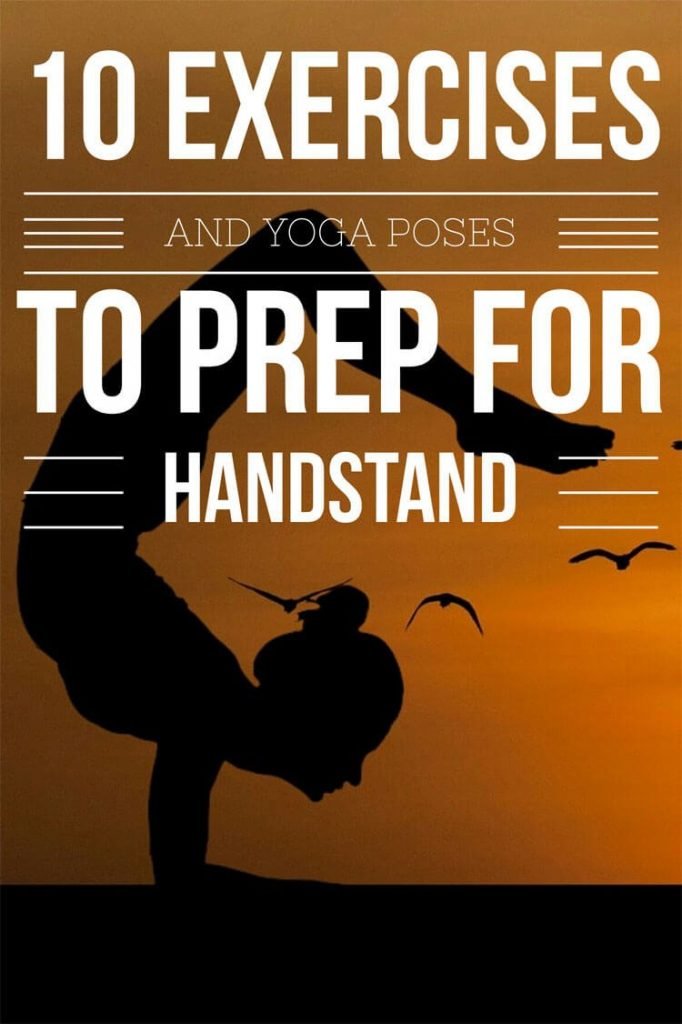Last Updated on April 24, 2025 by Casey
Let’s talk about the truth behind the 1000 calorie burn workout—because chances are, if you’ve ever searched for one, you’re not here for entertainment. You’re here to get results. Real fat loss. Real change. Something that actually works, not just makes you sweat.
I’ve tried those viral “burn 1000 calories in one workout” YouTube routines. And I strapped on my WHOOP Band—which tracks your strain, recovery, and heart rate variability like a lab-grade coach—to see what really happens.
Spoiler: I didn’t burn 1000 calories. Not even close. But I did learn why these workouts matter, how most people get them wrong, and what actually moves the needle if you’re trying to lose fat, build strength, and stop spinning your wheels.
Because let’s be honest—
“People don’t fail from a lack of goals. They fail from a lack of standards.”
— Alex Hormozi
If you’re ready to raise your standards, stop guessing, and actually make this kind of workout work for you, this guide is for you. You’ll get:
- Science-backed truth on calorie burn
- Tools to make workouts more effective (even if you’re at home)
- Smart product picks I personally stand behind
- A strategy to break the plateau—for real
Let’s dive in.

🟩 Can You Really Burn 1000 Calories in One Workout?
Here’s the raw truth: burning 1000 calories in one workout is possible—but it’s rare, and it’s not what you think.
Most people get hooked by the title and think 45 minutes of jumping jacks and burpees is going to melt off 1000 calories. But the real number? For the average person? It’s usually half that.
🔥 The Science (Not the Clickbait)
According to Harvard Medical School, a 155 lb person will burn:
- 252 calories running at 6 mph for 30 minutes
- 360–400 calories doing high-intensity circuit training for 45–60 minutes
- ~700–1000 calories only if they’re heavier, extremely conditioned, and training hard for 60+ minutes
So unless you’re pushing yourself at max effort like a Navy SEAL, don’t expect to hit 1000 just because a YouTube thumbnail says so.
“You have to build calluses on your mind. Get comfortable being uncomfortable.”
— David Goggins
🧪 My Test with the WHOOP Band
When I tested this with my WHOOP Band, I followed one of the most-viewed “1000 Calorie HIIT” videos out there. The workout? Brutal. I was drenched in sweat, legs shaking, heart pounding.
My actual calorie burn?
359 calories.
But here’s what mattered more: WHOOP told me my strain score was through the roof, and my recovery score the next day was in the red. Meaning: I was wrecking my body more than helping it—and I would’ve had no idea without a tracker this accurate.
That’s where most people go wrong. They don’t track recovery. They don’t measure performance beyond a calorie count. And then they wonder why they plateau or get injured.
✅ Want to Train Smarter (Not Just Harder)?
Here’s what I recommend—because just working harder isn’t enough anymore:
🛒 Gear That Actually Helps:
- 🔗 WHOOP Band – Real data, real recovery, no guessing
- 🔗 Adjustable Dumbbells – Add resistance, boost burn
- 🔗 Weighted Vest – Burn more calories even during bodyweight workouts
These aren’t gimmicks. These are tools that make your body work harder without trashing it.
🟩 The Best 1000 Calorie HIIT Workouts on YouTube (That Are Actually Worth Your Time)
If you’re going to chase a 1000 calorie burn workout, you need routines that actually push your body—not just look good on camera. The right HIIT videos will leave you drenched, out of breath, and most importantly, will keep your heart rate in the fat-burning zone the entire time.
Here are the HIIT creators I trust, especially when paired with a performance tracker like the WHOOP Band or simple gear like a weighted vest or resistance bands to up the intensity.
“If you’re not tracking, you’re guessing. If you’re guessing, you’re wasting time.”
— Alex Hormozi
💪 Creator #1: Fitness Blender
- Known for: Full-length, no-BS, high-burn workouts
- Best pick: “1000 Calorie Workout Video – High Intensity Total Body Strength and Cardio”
- Why it works: Combines strength and cardio, uses intervals, minimal rest
- Bonus: You can do it with bodyweight or gear—ideal for using a weighted vest to increase calorie burn
🔥 Creator #2: Chloe Ting
- Known for: Viral ab workouts, beginner-friendly format
- Why it works: Her full-body HIIT routines with minimal rest can feel intense
- Watch out: These are great for burning 300–500 calories max, but you’ll need to stack videos
⚡ Creator #3: Caroline Girvan
- Known for: High-intensity strength + conditioning hybrid workouts
- Best pick: Epic Heat or Iron Series
- Why it works: These aren’t cardio-only fluff—they build muscle and burn fat
✅ Bonus Tips to Get the Most Out of These Workouts:
- Track Your Heart Rate Zones. WHOOP does this best, but a basic HR monitor works too.
- Double Stack Workouts: Two 30-minute routines back-to-back can push you into the 700+ calorie zone—especially if one is strength-based.
- Use Intervals That Actually Burn: 40:20 or 45:15 is ideal. Skip the ones with more rest than work.
“Energy flows where attention goes.”
— Tony Robbins
If your goal is to torch fat and transform your body, don’t just follow the popular crowd—use the workouts that deliver results. Track. Push. Recover. Repeat.
🟩 1000 Calorie Workout With No Equipment (Can You Actually Pull It Off?)
Short answer? Yes—but it’s brutal.
If you’re going after a 1000 calorie burn workout with no equipment, you’re in for a sweat-fest. But here’s the catch most people don’t talk about:
Without weights or machines, the only way to hit those numbers is by pushing your cardio threshold, keeping your heart rate sky-high, and stacking time under tension with zero breaks.
This isn’t beginner stuff—it’s mental as much as it is physical.
“Most people think they’re working hard. They’re not. They’re working at a level they’re comfortable with. That’s not where change happens.”
— David Goggins
🔥 What It Takes
To burn close to 1000 calories using just your body, you need:
- 60–90 minutes of non-stop movement
- Advanced full-body HIIT circuits
- Strategic moves that hit multiple muscle groups at once
- A heart rate consistently in Zone 3–5 (monitored with WHOOP or a budget HR tracker)
Sample no-equipment calorie-killer circuit:
- 20 jump squats
- 10 push-ups
- 15 burpees
- 20 mountain climbers
- 30 seconds high knees
- Repeat for 60 minutes with <30 sec rest per round
🧠 Want to take this to the next level?
🛠️ Tools That Make Bodyweight Training More Powerful:
- 🔗 Weighted Vest – Add load without losing mobility
- 🔗 Core Sliders – Engage more muscle with less impact
- 🔗 WHOOP Band – Track real-time strain & recovery without distractions
These are stackable upgrades that keep you training smart even without a single dumbbell in sight.
“The body follows the mind. If you master your mindset, your body has no choice but to follow.”
— Joe Dispenza
If you’re serious about results, don’t use “no equipment” as an excuse. Use it as a challenge. Show your body what’s possible when discipline replaces excuses.
🟩 1000 Calorie Treadmill Workout (Sample Plan + Tips to Max Your Burn)
If your go-to machine is the treadmill, yes—you can use it to hit that mythical 1000 calorie burn workout… but it won’t come easy. You need to dial in intensity, incline, and interval timing to stop wasting time walking at 3 mph watching Netflix.
Here’s what most people get wrong:
They run too slow, too steady, or too safe. To torch fat, you need strategic bursts that push your heart rate high, then brief recovery windows to allow for repeat effort.
“If it doesn’t challenge you, it doesn’t change you.”
— Tony Robbins
🏃♀️ Sample 1000 Calorie Treadmill Workout
For reference:
A 160–180 lb person can burn 900–1100 calories with this 60-minute incline HIIT protocol (confirmed using WHOOP and a Polar HR chest strap):
| Time | Speed (mph) | Incline (%) | Type |
|---|---|---|---|
| 0–5 min | 3.5 | 3 | Warm-up |
| 5–15 min | 6.0 | 2 | Steady jog |
| 15–25 min | 7.5 | 1 | Sprint Intervals: 30s sprint / 30s rest |
| 25–35 min | 5.5 | 10 | Power walk uphill |
| 35–45 min | 6.5 | 3 | Steady state |
| 45–55 min | 8.0 | 0 | Sprint Intervals: 45s sprint / 15s rest |
| 55–60 min | 3.5 | 2 | Cool down |
🧠 Bonus Tip: Pair this with a post-workout smoothie that fuels recovery and keeps your appetite in check—more on that below.
🛠️ Treadmill Boosting Tools (Gear That Works):
- 🔗 Running Belt with Water Holder – Stay hydrated while sprinting
- 🔗 Treadmill Mat – Reduce impact, protect your floor
- 🔗 Cushioned Running Shoes – Save your joints at high incline
🟩 Smoothie Diet: Fuel Your Burn Without Rebound Hunger
Let’s be real: after pushing through an intense workout—whether it burns 300 or 1000 calories—your hunger hits like a freight train. And that’s where most people destroy their deficit without realizing it.
You finish a killer HIIT session, then mindlessly eat 800 calories “because you earned it.”
That’s how people stay stuck. Overworked, under-recovered, and not losing an inch.
“You don’t need a new plan. You need to stop going off plan when you’re tired, hungry, or emotional.”
— Leila Hormozi
🥤 Why the Smoothie Diet Works (When You Do It Right)
The Smoothie Diet is more than just meal replacements. It’s a structure—designed to:
- Help you feel full without wrecking your calorie deficit
- Boost your nutrient density (especially after tough workouts)
- Cut the decision fatigue of “what do I eat now?”
You get:
- 36+ fat-burning smoothie recipes
- Weekly shopping lists and prep guides
- A full 3-day detox plan to kickstart fat loss
It’s a smart move for anyone who:
- Struggles with late-night cravings
- Eats “healthy” but still overeats
- Wants fast, energizing meals that actually satisfy
And yes—it’s great for busy parents, people who work full-time, and anyone who hates complicated cooking.
🛒 🔗 Check out the Smoothie Diet here and get the full plan →
🔥 What I Noticed When I Tried It:
- My post-workout recovery felt smoother
- I wasn’t ravenous by dinner
- I stopped grabbing random snacks in the evening
It’s not magic. It’s just finally having a system that works with your workouts instead of against them.

🟩 Final Verdict: Are 1000 Calorie Workouts Worth It?
Here’s the truth no fitness influencer puts in the title:
A 1000 calorie burn workout is not a requirement for fat loss. It’s not the magic number. And it sure as hell isn’t the standard you need to hit every time you train.
But if you’re using it as a mental push, a way to break plateaus, or challenge yourself once a week—then yes, it can absolutely have a place in your plan.
The real key?
Consistency. Recovery. And a system that doesn’t collapse when life gets busy.
“It’s not what you do once that changes your life. It’s what you do consistently.”
— Tony Robbins
🚀 Here’s How to Actually Make Progress:
- Track your intensity (with or without gear)
- Stack smart workouts—not just sweaty ones
- Fuel with purpose, not cravings
- Use structured tools like the Smoothie Diet to stay in control
- Focus on the weekly deficit, not daily hype
Because chasing numbers is useless if your system sucks. And burning 1000 calories doesn’t mean anything if you eat 1200 back in “rewards.”
Want change? Then change your habits, not just your workouts.
👇 Ready to Go From Sweating to Actually Progressing?
Here’s your next step:
- 🔗 Try one of these top YouTube HIIT workouts
- 🔗 Start the Smoothie Diet and fuel smarter
- 🔗 Start tracking
No fluff. Just results.
Let’s get after it. 💪
FAQs
Can you actually burn 1000 calories in one workout?
Yes, but it depends on your weight, effort level, and workout duration. Most people burn 300–700 calories in high-intensity sessions. To hit 1000, you’d likely need 60–90 minutes of intense training, especially if you’re lighter or less conditioned.
What’s the best way to burn 1000 calories fast?
High-intensity interval training (HIIT), treadmill sprints, rowing, and stair climbing are some of the most effective methods. Combining resistance and cardio will burn more than cardio alone.
Are 1000 calorie workouts good for weight loss?
They can help—but only if your overall calorie intake stays below your burn. Consistency matters more than intensity. A sustainable calorie deficit wins every time.
Do you need equipment to do a 1000 calorie workout?
Not necessarily. You can burn a lot with bodyweight exercises, but using tools like a weighted vest or resistance bands increases intensity and helps build muscle (which boosts burn long-term).
How often should I do high-calorie workouts like this?
1–2 times a week is plenty. You don’t want to burn out your nervous system or set up a binge-restrict cycle. Pair them with moderate sessions and active recovery.
What should I eat after a 1000 calorie workout?
Focus on protein + fiber to repair muscle and keep cravings down. Something like a smoothie from The Smoothie Diet plan can help refuel without blowing your deficit.





